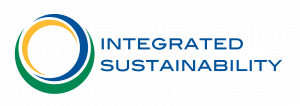Every year, American oil producers are leaving millions of dollars on the table in the form of untreated brine water. Often left in storage, or pumped back underground, this operational waste can be distilled and resold for beneficial reuse in agriculture, industrial processes, and in the public sector: commercializing an increasingly scarce resource and turning a sunk cost into a revenue stream.
Jurisdictions in the United States are leading global counterparts in recognizing this potential market. Due to the pressure from a multi-year drought, several states have opened the sale of treated brine water into the wider hydrosphere. There is an opportunity for savvy operators to align financial benefits with their ESG strategy, relieving pressure on the natural environment, local municipalities, regulators, and shareholders, alike.
Wanted: A step-change in water distillation.
Until recently, industrial saline produced water treatment in North America was not financially viable. Energy expenditure for heating boilers and traditional is absurdly expensive. Similarly, both chemical and membrane management of saline produced water increased OPEX beyond what is economically prudent. It wasn’t until Low Temperature Distillation (LTDisTM) that industrial brine water treatment was affordable enough to justify costs. This technology delivers two key advancements:
1. Reduced Pre-treatment costs
Low-grade heat and high circulation rates prevent scaling on heat transfer equipment, a challenge that has plagued other evaporative solutions. It is the thermodynamic properties, not chemical reaction rates, that drive the distillate recovery. This innovation allows for a lower water quality threshold to be used, increasing the availability of feedstock and supply.
Furthermore, performance is not impacted by changes in feed water quality during operation. This flexibility makes it a good fit for produced brine water, which changes from well to well. The technology is robust and transferrable between facilities, applications, and industries with very little customization required.
2. Reuse of Waste Heat.
The LTDisTM technology employs an adaptive process that self-corrects vacuum pressure settings and internal circulation to maintain a thermodynamic balance in response to changing external variables.
Using waste heat as a heat source results in a minimal operations cost, and in some cases, there is a [90%] reduction in comparison to traditional desalination technologies. Ultimately, deployment of LTDisTM technology will substantially reduce both the capital expenditure and the Green House Gas (GHG) footprint for water management:
The comparative results from a sample case study are clear.
When LTDisTM is used instead of other direct evaporation technologies, typical waste heat reduction at gas processing facilities amount to a 95% estimated yearly CO2e saving.
Direct contact evaporation technologies generate nearly 79,000 tCO2e/yr from its evaporation, desalination, and power requirements alone. Conversely, LTDisTM uses waste heat produced at the site, only generating carbon dioxide through its electrical energy demand, resulting in the generation of just over 3,200 tCO2e/yr.
Alignment with ESG Strategy.
GHG emissions reductions are not the only environmental benefits that the LTDisTM unit provides. The unit positively impacts in the following ways:
- Decreasing the volume of water lost from the water cycle when sent to disposal.
- Recondensation of treated water for beneficial re-use reduces the need for freshwater withdrawal from the environment.
- Reducing the strain on already limited disposal injection formations
- Decreasing the risk of over-pressurization of injection wells leading to induced seismicity by decreasing disposal volumes.
- When compared to Clean Brine recycling – LTDisTM desalination reduced environmental risk when conveying water in surface hose, and will reduce saline water trucking, alleviating stakeholder concerns regarding traffic and road wear.
- Treating water to beneficial reuse specifications allows for release into many more suitable uses beyond only hydraulic fracturing, i.e., for agriculture and industrial processing.
Fracking Water Issues – Filling The Gap
There has not yet been a viable treatment option or beneficial reuse alternative for when the water demand for hydraulic fracturing falls behind the volume of produced water being generated. A scenario that is often experienced in fully developed and producing fields where only a few wells are added each year to replace declines.
When the entire field is consistently generating produced water with high hardness and/or high total dissolved solids (TDS), and often in tandem with difficult challenges like H2S, the excess produced water is almost always sent to disposal.
LTDisTM technology has the potential to reduce the amount of produced water being disposed by as much as 80%, and in some scenarios, turn hydraulic fracturing into a net producer of freshwater.
The scalability and potential of LTDisTM technology within the oil and gas sector alone is significant. Suitable markets include LNG, upstream shale plays, midstream gas processing facilities, and thermal recovery of unconventional and oilsands reserves. All these sectors generate wastewater streams with high hardness and TDS, and all have facilities that generate suitable waste heat to be used by LTDisTM. In addition, the application of waste heat can positively contribute to a GHG and water conservation impact.
Best in Class
The LTDisTM technology is a step-change. A clean technology innovation that works towards balancing a carbon-neutral economy and sustainable resource management while encouraging economic growth and diversification. The modular and standardized design also allows for plant sizes to be scaled up or down to meet the demand of clients’ needs.
LTDisTM is simply the Best-In-Class of commercially available technologies for desalination, overcoming multiple recycling barriers and technology challenges. Using this next generation technology to treat wastewater for beneficial reuse can displace billions of gallons of fresh water per year, become a significant contributor to sustainable industry, the energy transition, and the fight against climate change.
Contact us for a more in-depth conversation on how this technology can improve your water treatment operation.
Yves Matson
Director, Strategic Development
Integrated Sustainability
587-216-4949
[email protected]
integratedsustainability.ca
Share This:




 CDN NEWS |
CDN NEWS |  US NEWS
US NEWS 






























COMMENTARY: Where the Fight Against Energy Subsidies Stands – Alex Epstein